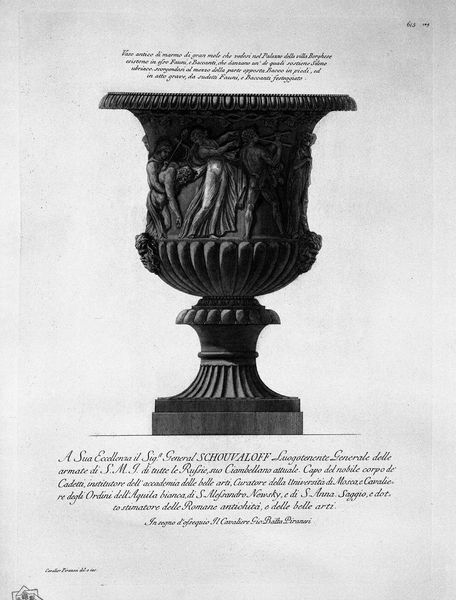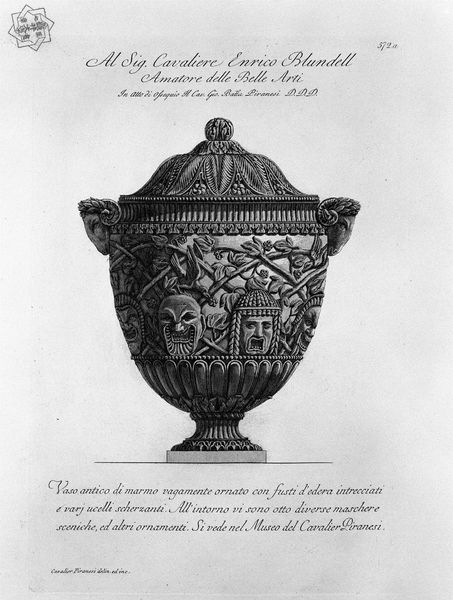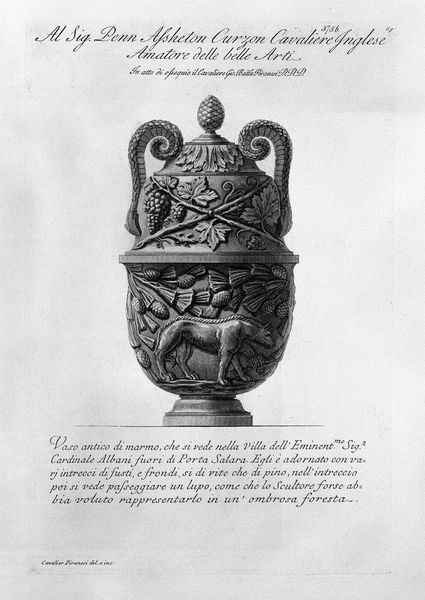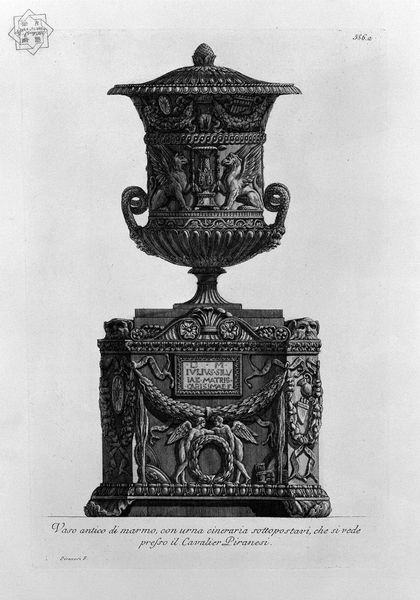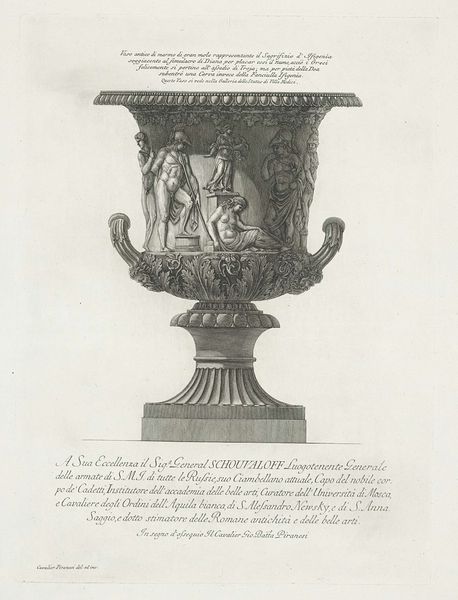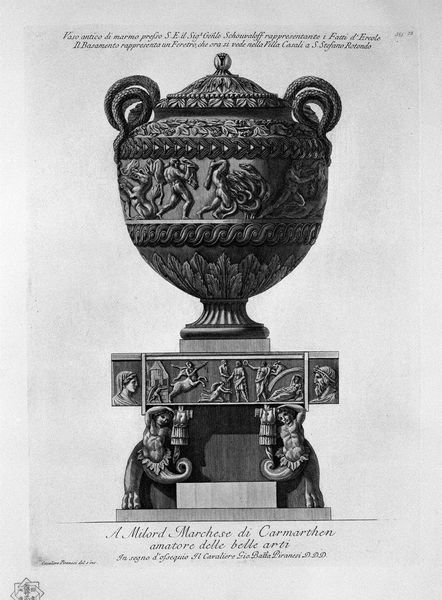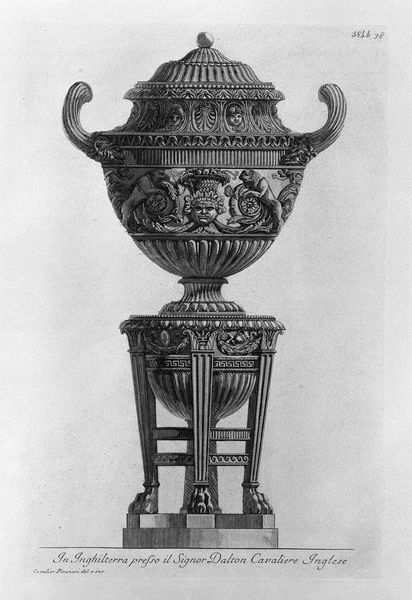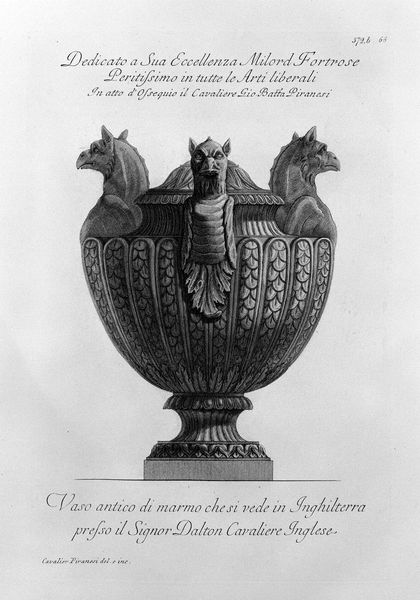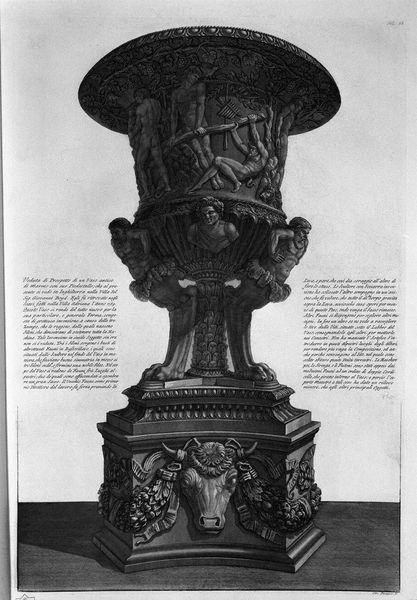
Antique vase of marble with kneeling figures drinking from hippogryphs, with chandeliers and a pedestal corner
0:00
0:00
print, etching, sculpture, engraving
#
neoclassicism
# print
#
etching
#
sculpture
#
greek-and-roman-art
#
landscape
#
figuration
#
form
#
sculpture
#
line
#
academic-art
#
engraving
#
realism
Copyright: Public domain
Editor: This etching by Giovanni Battista Piranesi showcases an antique marble vase, embellished with scenes of figures and hippogryphs. The print focuses on form. It has an incredibly detailed design, all rendered in monochrome. How would you interpret this work within its historical context? Curator: Piranesi wasn’t simply documenting ancient artifacts; he was actively shaping perceptions of Roman grandeur. This print, like much of his work, participates in the 18th-century debate about the relative merits of Greek versus Roman art and architecture. It’s not just about the vase itself, but about promoting a particular vision of Roman cultural authority. Notice the text within the engraving. What does it signify to you? Editor: The Latin inscription in the center? It appears to be dedicatory or commemorative. So you’re saying that Piranesi’s etchings played a role in constructing a specific narrative about Roman power and influence during his time? Curator: Precisely. He used his artistic skill and printing technology to circulate images of Roman artifacts – often idealized or even imagined reconstructions – thereby influencing contemporary taste and fueling a market for all things Roman. Think of it as visual propaganda, if you will, designed to evoke a sense of awe and admiration for Roman civilization. His views of the Colosseum, for example, helped shape how generations viewed and understood Roman history. The composition also reveals an artist emphasizing the sheer spectacle of Rome's historical objects. Do you think the framing draws attention to anything specifically? Editor: I guess it puts emphasis on the grand scale of the object and hints at an important history surrounding Roman power! So, the focus is less on strict archaeological accuracy and more on crafting a powerful visual argument? Curator: Exactly. It highlights how art becomes enmeshed within larger socio-political dialogues, shaping cultural memory and national identity. Editor: That's a fascinating perspective. I hadn't considered the active role these images played in shaping perceptions of Rome. Thanks! Curator: It’s a good reminder that even seemingly objective documentation can be a powerful form of interpretation and persuasion.
Comments
No comments
Be the first to comment and join the conversation on the ultimate creative platform.
